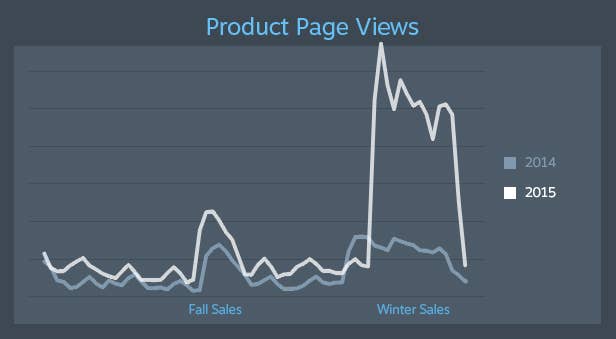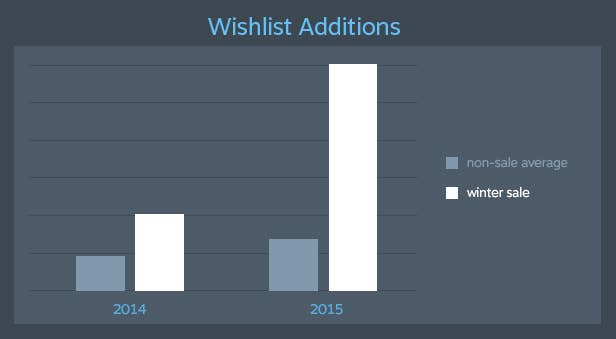Steam's Winter Sale format change drove more product views, sales, wishlist additions
According to Valve, last year's Winter Sale did better because of its new format.
If you've been following Steam sales for a while, you'll know that outside of the yearly gimmicks or mini-games each of them brings, the format went largely unchanged for so long. We'd always get a store-wide sale with discounts on almost all titles, some of which get even deeper discounts when featured on the front page, which happens daily.
In short, a lot of games had two sale prices, and everyone was advised to wait for the dailies to guarantee the lowest price for their game. 2015's Winter Sale, however, forego this system in favour of another, more streamlined one. All games have one sale price which doesn't change throughout the sale period, with the front page still refreshing daily, but only to highlight discounts.
This was a huge success for Valve, according to some stats the company posted in a public Steam group by accident. The post has since been removed, but not before Steamdb grabbed it.
According to Valve, this format change resulted in an uptick of product views, wishlist additions, and ultimately more sales. The Discovery Queue, which allowed users to go through a select number of game pages and receive a trading card for every queue they finish (up to three a day), was the main reason for this increase, despite Valve fearing some users will just keep clicking through to get the cards.
This also affected the number of games users added to their wishlists, a stat that only typically gets a slight increase during sales. The change was dramatic, and represented a 197 percent increase in the rate of wishlist additions.
The new format helped not only make big titles sell well, but even reached to below the top 500 selling titles. 35 percent of page traffic to some of these titles are four times that of the previous Winter Sale, helping them grow 45 percent in revenue compared to the same period of the previous year.



